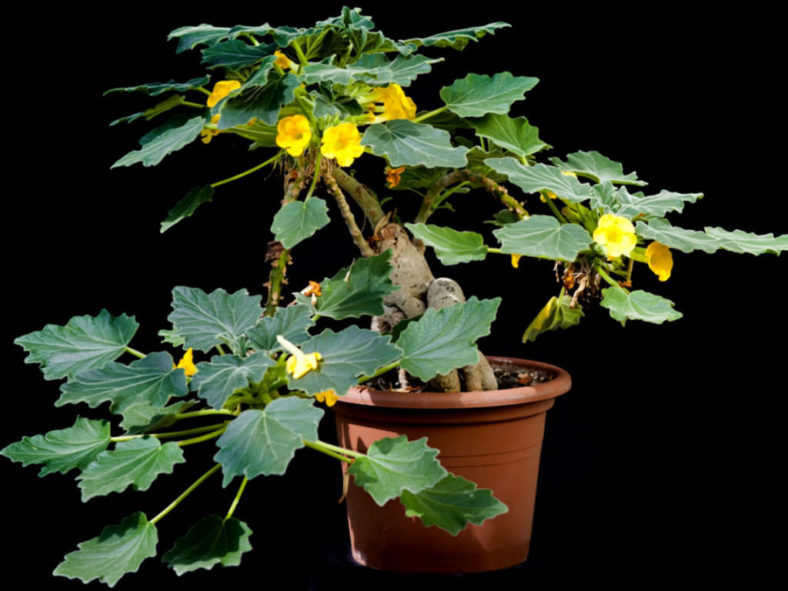Uncarina is a genus of plants in the family Pedaliaceae. Originating in Madagascar, the deciduous shrubs may sometimes be considered small trees as they grow to 25 feet (7.6 m) tall. Leaves are oval and green, and flowers are bell-shaped and tubular. Uncarinas bloom easily, and it is a striking vision when covered with flowers. The seed capsules feature small hooked harpoons.
There are about 15 species, and all are in cultivation. Flowers are in three colors: red, white, and yellow. The latter is the most common. Only one species has a true caudex, Uncarina roeoesliana. It is also the easiest one to flower and can already bloom when still small. The rarest is Uncarina leptocarpa, the only white-flowering species.
Growing Conditions
Light: These heat-resistant plants do best when grown in part shade to full sun.
Temperature: Uncarinas are tender and cannot endure temperatures below 35 2° F (2°). If grown outdoors, they will probably grow back from roots if frozen. They are quite heat-tolerant.
Water: Water abundantly when actively growing and keep dry when dormant.
Soil: Uncarinas needs rich, very well-drained potting soil.
Fertilizer: Use diluted fertilizer on young plants to speed up growth.

Grower's Tips
One reason that Uncarinas are not common in cultivation is that the seeds do not germinate easily. Propagation by cuttings is not a substitute because they do not root easily either. In short, they are difficult plants to propagate.
But, once you have managed to get yourself one, it is relatively easy to grow. They need plenty of warmth and water in the growing season, but keep them dry in the winter. They can grow up to 25 feet (7.6 m) in the wild but do not expect that in your greenhouse or window sill.
Links
- Back to genus Uncarina
- Succupedia: Browse succulents by Scientific Name, Common Name, Genus, Family, USDA Hardiness Zone, Origin, or cacti by Genus